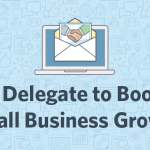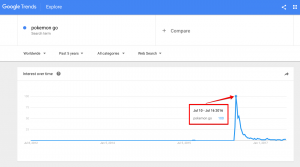When you say “social media interaction,” most people think Snapchat, Twitter, or Facebook. But one of your most important social media profiles — and one you might not update often — is LinkedIn.
The site is geared toward professional networking and job mining, and it has more than 400 million members in more than 200 countries and territories. Beyond that, a recent survey found that 76 percent of executives check the site on a daily basis.
In fact, research firm IPSOS found that LinkedIn reaches more C-suite executives than any other site measured. With such a huge database of professionals from every imaginable industry using it, LinkedIn is more than just a branding site — it’s a great way to interact directly with influential players and potential customers and partners.
If you’re trying to be a mover and a shaker, ignoring LinkedIn is a big mistake. It is the perfect platform for capturing business leads among educated, high-income adults and provides a variety of methods to reach out and pitch someone.
Where to Start
The right way to use LinkedIn is a little counterintuitive to most business people. They think, “I want people to know about my business. I want to make a sale. So I should tell them all about the amazing things we can do for them, right?”
Wrong.
That’s actually the quickest way to turn people off and make them click elsewhere. First, you have to offer real value and build relationships, and then start introducing your business.
Here are six ways to make the most of your LinkedIn account:
1. Post relevant content. It’s not uncommon to see people promoting their brands, products, and services through LinkedIn posts or on its Pulse platform. While this may help to achieve some level of success, blatant promotion misses the point of content marketing.
Say you’re an attorney who specializes in business law. Posting detailed information about business law may seem like the perfect way to market — and this is true on search engines like Google and Bing. On LinkedIn, though, this will get old quickly, as most business owners and entrepreneurs don’t think about business law until they need it.
Instead, you should also include items that the type of people you’re hoping to attract will find valuable and interesting. While it may not lead to an immediate sale, it’ll boost your credibility and visibility among LinkedIn users. Your thoughtfully conceived, personal messaging has the potential to go viral, extending your marketing reach and making you a relatable lawyer who knows interesting facts about business as well as law.
2. Stand out from the crowd. The majority of users turn their companies and job titles into the headline for their profiles, making it hard to tell one mechanical engineer from another. LinkedIn profiles are like online résumés, so your headline should grab the attention of your target audience and make them want to read more.
Consider making your headline a statement that conveys the benefit your services can provide. For example, one of my clients is a wealth adviser, and his headline — “Wealth advice that enables business owners and retirees” — appeals directly to users seeking such advice.
Adding a few of your most relevant or current projects is a good way to showcase your expertise, too. And don’t forget to include a high-resolution photo of yourself looking like a seasoned pro.
3. Include a call to action. It’s important to include call-to-action links in your profile. Think of your profile as a landing page. When a prospect views your profile, what action do you want him or her to take? Structure your summary section to make it happen.
You can also add a call to action above your summary section using the “Projects” feature with links to a landing page or other site. As it relates to your summary section, bracketing it in Unicode symbols can also help get the reader’s attention.
4. Join groups your prospects belong to. If you work in marketing and join a marketing group, you may learn a few things, but you probably won’t gain any business prospects. Marketers aren’t usually looking for other marketers; they’re looking for companies that need marketing assistance and might sign on as clients.
So figure out what types of businesses you want to market to, and join groups related to those industries. This gives you a chance to learn about potential customer pain points so that by the time you reach out to a customer, you’ll already know how to target your sales pitch.
5. Use advanced search to identify prospects. With such a deep archive of profiles to browse, LinkedIn provides extensive search filter options and Advanced People Search, which can help you find potentially thousands — even millions — of prospective customers. By targeting people based on geographic location, job title, industry, company, and more, you can create targeted demographic lists of who’s who in your local region and around the world.
Sometimes simply knowing the right name is enough. For example, if you had an idea for a new toy and wanted to pitch it to toy companies, LinkedIn could help you find the names of relevant executives and departments. Then, you could directly reach out and begin developing a relationship with the person who has purchasing authority for the company.
6. Publish on LinkedIn Pulse. Finally, get to know the Pulse channels and write about two or three topics your prospects would find interesting. Make sure you write a compelling title, ask a question to encourage engagement, and include a call to action at the end.
LinkedIn is more than just an online resume — it’s an active social media network where business professionals connect. If you focus on providing potential customers with the information they want to see, it won’t be long before your LinkedIn profile starts pulling real, viable sales leads.
Digital & Social Articles on Business 2 Community(37)






